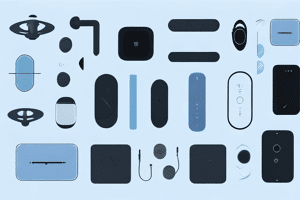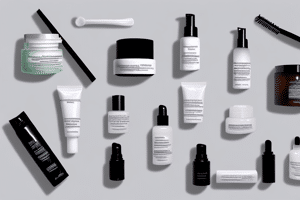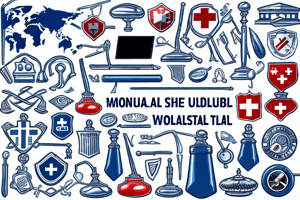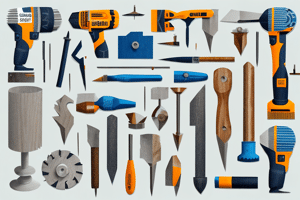UPDATED: March 26, 2023
As a pocket knife enthusiast, I cannot emphasize enough the significance of owning a sharp and well-maintained blade! Trust me, a pocket knife can be your best friend in countless situations, be it camping, hunting, or simply accomplishing everyday tasks. Imagine you're in the great outdoors, and your trusty pocket knife is all that stands between you and a thrilling adventure. With a razor-sharp blade, you can smoothly cut through rope, carve wood, or even prepare a delicious meal at the campsite. Oh, the possibilities are endless!
But to keep your pocket knife in tip-top shape, proper care and storage are absolutely crucial. Remember, a dull blade is not only less efficient but also poses a safety risk. By regularly honing and sharpening your pocket knife, you'll ensure that it stays efficient and reliable for years to come. And let's not forget the importance of proper storage! By keeping your pocket knife in a secure and dry location, you'll protect it from potential damage, rust, or corrosion.

Introduction to Pocket Knives and Their Maintenance
Pocket knives are versatile tools that come in handy in various situations. They are perfect for slicing, cutting, and carving, among other tasks. However, like any other tool, pocket knives require maintenance to perform optimally. Proper maintenance involves sharpening and storage.
Sharpening a pocket knife involves removing dull edges from the blade to restore its sharpness. On the other hand, proper storage involves keeping the blade dry, clean, and protected from dust and moisture. In this article, I will share some tips on how to sharpen and store your pocket knife to ensure it stays sharp and lasts for years.
Why It's Important to Sharpen and Store Your Pocket Knife
A dull pocket knife can be frustrating to use. It requires more force to cut through materials, and it can slip and cause injuries. Sharpening your pocket knife ensures that it retains its sharpness, making it easy and safe to use. A sharp blade also reduces the risk of accidents and improves cutting precision.
Proper storage is also essential for maintaining the blade's longevity. Exposure to moisture and dust can cause the blade to rust or corrode, leading to damage or even breakage. By storing your knife properly, you protect it from environmental factors that can cause premature wear and tear.
Tools Needed for Sharpening a Pocket Knife
Before you begin sharpening your pocket knife, you'll need a few tools to get the job done. The most common tools for sharpening a knife are sharpening stones, honing rods, and diamond sharpeners. Sharpening stones come in different grits, and the choice of grit depends on the blade's condition and the desired sharpness level.
Honing rods are ideal for maintaining the blade's sharpness between sharpenings. They are also useful for realigning the blade's edge when it becomes bent or misaligned. Diamond sharpeners, on the other hand, are perfect for sharpening serrated blades.
Other tools you'll need for sharpening a pocket knife include a lubricant, a towel, and safety gloves. The lubricant helps to reduce friction between the blade and the stone, while the towel is used to wipe off the blade after sharpening. Safety gloves protect your fingers from the sharp blade.
Sharpening Your Pocket Knife: A Comprehensive Guide to Sharpening Stones, Honing Rods, and Diamond Sharpeners
A pocket knife is an essential tool for outdoor enthusiasts, hikers, and hunters. However, a dull knife is not only frustrating but also dangerous. Fortunately, sharpening your knife is easier than you might think. In this guide, we'll show you how to sharpen your knife with three different tools: sharpening stones, honing rods, and diamond sharpeners.
Sharpening Your Knife with Sharpening Stones
Sharpening stones are one of the most traditional ways of sharpening a pocket knife. Here's how you can sharpen your knife using sharpening stones:
Step 1: Choose Your Sharpening Stone
There are various types of sharpening stones available in the market, including natural stones, synthetic stones, and diamond stones. Choose the one that best suits your needs
Step 2: Lubricate the Sharpening Stone
Lubricate the sharpening stone with water or honing oil before use.
Step 3: Sharpen the Blade
Hold the knife blade at an angle of 20 degrees to the stone and move it back and forth along the stone. Repeat the process with the other side of the blade.
Step 4: Hone the Blade
Use a honing steel to hone the blade of your knife after sharpening.

Sharpening Your Knife with Honing Rods
Honing rods, also known as sharpening steels, are used to sharpen and realign the edge of a pocket knife. Here's how to sharpen your knife with honing rods:
Step 1: Choose Your Honing Rod
Select a honing rod that matches the length of your knife.
Step 2: Hold the Honing Rod
Hold the honing rod vertically in your non-dominant hand.
Step 3: Hold the Knife
Place the blade of the knife against the honing rod at a 20-degree angle.
Step 4: Sharpen the Knife
Draw the blade along the honing rod from the base to the tip while maintaining the 20-degree angle.
Step 5: Repeat the Process
Repeat the process for the other side of the blade.

Sharpening Your Knife with Diamond Sharpeners
Diamond sharpeners are abrasive surfaces that can sharpen pocket knives and other tools quickly. Here's how to use a diamond sharpener to sharpen your pocket knife:
Step 1: Choose Your Diamond Sharpener
Choose the appropriate diamond sharpener based on the size and condition of your knife.
Step 2: Hold the Sharpener
Hold the diamond sharpener firmly in one hand and place it on a stable surface.
Step 3: Sharpen the Blade
Hold the blade of the knife against the diamond sharpener at a 20-degree angle and draw it across the sharpener, moving from the base of the blade to the tip.
Step 4: Repeat the Process
Repeat the process for the other side of the blade.

Looking for the best pocket knife to add to your collection?
Our comprehensive guide has got you covered! We've researched and tested the top pocket knives on the market to bring you the best of the best. Whether you're an outdoor enthusiast, a hiker, or a hunter, we've got a pocket knife that's perfect for you. From Kershaw, CRKT, and Spyderco, we've got all the information you need to make an informed decision. Don't miss out on this must-read article - click here to read about the Best Pocket Knife!
Best Way to Sharpen a Pocket Knife
The best way to sharpen a pocket knife depends on the blade's condition, the type of stone used, and the desired sharpness level. However, a general rule is to maintain a consistent angle and pressure when running the blade over the stone. It's also important to use the appropriate grit for the stone, starting with a coarse grit and moving to finer grits for a sharper edge.
Another way to sharpen a pocket knife is using a guided sharpening system. A guided sharpening system allows you to maintain a consistent angle and pressure when sharpening the blade, making it easier to achieve a sharp edge. Some guided sharpening systems come with interchangeable stones of different grits, making the sharpening process more efficient.
How Often to Sharpen a Pocket Knife
The frequency of sharpening a pocket knife depends on how often you use it and the type of materials you cut with it. If you use your pocket knife frequently and cut through tough materials like wood or rope, you may need to sharpen it every few weeks. However, if you use your pocket knife occasionally and cut through soft materials like paper or cardboard, you may only need to sharpen it once or twice a year.
A good way to tell if your pocket knife needs sharpening is by testing its sharpness. You can do this by running your thumb along the blade's edge. If it feels dull or rough, it's time to sharpen the blade.
How to Properly Store a Pocket Knife
Proper storage is essential for maintaining a pocket knife's longevity. Here are some tips on how to store your pocket knife:
- Clean the blade – Before storing your knife, ensure that the blade is clean and dry. Wipe off any oil or debris using a clean towel.
- Choose a storage location – Store your knife in a dry and cool location, away from direct sunlight and moisture. A knife sheath or a blade cover can also protect the blade from dust and other environmental factors.
- Avoid storing in leather – Avoid storing your knife in a leather sheath for long periods. Leather can absorb moisture, leading to rust and corrosion.
- Keep it out of reach – Keep your knife out of reach of children and pets to prevent accidents.
Tips for Maintaining a Sharp Pocket Knife
Maintaining a sharp pocket knife involves more than just sharpening and storage. Here are some tips for maintaining a sharp knife:
- Use the right cutting surface – Avoid cutting on hard surfaces like metal or stone, as they can dull the blade quickly. Instead, use softer surfaces like wood or plastic.
- Clean the blade after use – Clean the blade after each use, using a clean towel or cloth to remove any debris. This prevents dirt and debris from building up, leading to dullness.
- Avoid using a dishwasher – Avoid cleaning your knife in a dishwasher, as the high heat and moisture can damage the blade's edge.
- Oil the blade – Apply a few drops of oil on the blade after cleaning and before storage. This helps to protect the blade from rust and corrosion.
Common Mistakes to Avoid While Sharpening a Pocket Knife
Sharpening a pocket knife can be a tedious process, and it's essential to avoid some common mistakes that can damage the blade. Some of these mistakes include:
- Using the wrong angle – Using the wrong angle when sharpening a knife can damage the blade and make it harder to maintain a sharp edge.
- Applying too much pressure – Applying too much pressure when sharpening a knife can damage the blade and cause it to wear down quickly.
- Not using lubricant – Not using lubricant when sharpening a knife can cause the blade to overheat, leading to damage or breakage.
- Using a dull stone – Using a dull stone can make the sharpening process longer and less efficient, leading to frustration and suboptimal results.
Final Thoughts
Sharpening and storing your pocket knife are essential for maintaining its longevity and ensuring it stays sharp and safe to use. By following the tips outlined in this article, you can sharpen your knife efficiently and store it properly, protecting it from environmental factors that can cause premature wear and tear.
Remember to use the right tools, maintain a consistent angle and pressure when sharpening, and store the blade in a dry and cool location. By doing so, you'll enjoy the benefits of a sharp and reliable knife for years to come.





